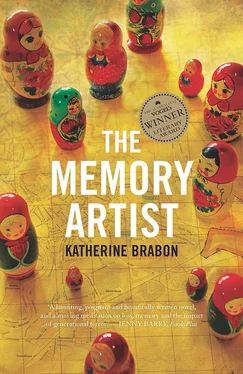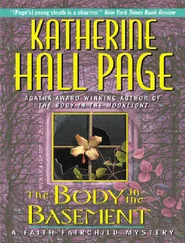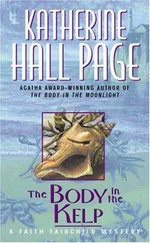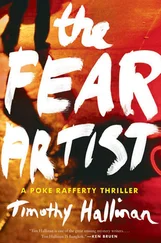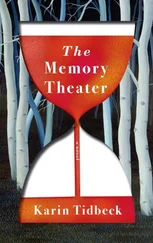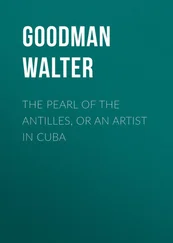Oleg looked over the desolate island. A light wind travelled around us, almost gently, and the day was warm.
I’ve tried to picture him, my father, when he was locked up, I said to Oleg.
I had never mentioned that to anyone and it felt strange to say it out loud.
Of course you have, said Oleg. If you love, you imagine.
We were quiet for a moment.
I could not quite picture my father there, Oleg said. I think instead I visualised things as though it was me in the camp, looking perhaps from the perspective of my father. Sometimes it was reassuring to be able to see what I thought he might have seen. It put him somewhere, I suppose you could say. He existed. Other times it was awful, picturing the worst, but then also being gripped by the conviction that I was utterly wrong in what I was assuming—wrong about where I was putting him, so to speak, with my thoughts.
And when he came back, said Oleg, it was as though I knew, in some internal, visceral way, what had happened. The damp dirt scent that seemed never to leave my father’s clothes very nearly reminded my nine-year-old self of the camp. His agitation, his look of horror, if lunch was to be an hour later than usual, almost reminded me of the regimented meagre meals in the Gulag, the only certain moment of each day. I would go so far as to say that if those memories could have spoken, I would have understood them even before I understood the Russian language.
As Oleg spoke I felt a horrible, heavy feeling in my chest. I felt weighed down by the sky at Solovetsky and by events that I hadn’t experienced. The place gave me a renewed need to create, to make, to do something to preserve all of the silenced voices and murdered people. It was less of the heady, excited rush I felt within the walls of the Sukhanovs’ apartment, more of a hardened, grey need.
Not long after we arrived at Solovetsky, we visited Zayatsky Island, home to the infamous dancing birch trees. Years of forceful winds had battered the papery white trunks as they grew, eternally freezing them in poses of arthritic stillness, both artistic and horrific.
Large grey boulders made a scattered path towards a wooden church, Andreyevsky Monastery. It was small, intricately constructed from many panes of wood turned grey by past wind and winter. Two small stone houses stood nearby, close to the rocky edge of the island.
You come somewhere like here, said Oleg, and you realise how far we’ve come from treating our dead in the right way.
We walked over a vast stretch of grass, around mounds of stone that sometimes obstructed our way. Masses of small red flowers spilled over the green.
Mourning was a process back then, said Oleg. Back in the days of religion, I mean. Not that I’m a religious man. But it does make you think. In an Orthodox burial, before the body was put into the ground there were three days of ritualised grief: mourners would weep and moan and wring their hands. During those hours and days, the dead were very much with the living, still in the room. Weeping women would kiss the newly departed on the mouth.
For the funeral service at the church, the coffin would be opened, and near the head of the deceased were placed a bowl of koliva , a dish of boiled wheat with honey, and a burning candle, to symbolise the cyclical nature of life and the sweetness of heaven. Candles were given to all those present at the service, their wicks alight in a constant flame, just as the mourners were to remain standing, like wavering flames themselves, for the duration of the service. Then, memorial services would be held on the third, ninth, twentieth and fortieth days after the death, those being the stages, so the custom goes, of the parting of the soul from the body. And it was the custom not to touch the dead person’s belongings until that fortieth day. What is quite striking about all this, it has always seemed to me, is the ease of being close to the dead. It is an ongoing relationship, so to speak, a connection maintained. The consequences of insufficient mourning were not to be incurred.
It’s been said, continued Oleg, that there are many Old Believers in the remotest corners of Russia—the Arkhangelsk region, the Altai mountains, in Tuva, across Siberia. And from times even earlier than Orthodoxy, there are stone burial circles covering the islands here. It seems to me that thoughts and beliefs rise and fall with the years. I like to think that all that is suppressed remains known somewhere.
As Oleg spoke we returned to the edge of the island. We waited for Vasily to take us back to Solovetsky.
This all now reminds me of Shalamov’s Kolyma Tales , which you’d remember me showing you some years ago, Pasha. We had it underground in the seventies, but it was officially published only recently, in 1986. After nearly a decade labouring in the land of the white death, as they sometimes call Kolyma, Shalamov had been reduced to a dokhodyaga , a ‘goner’ in Gulag-speak, one of the soon-to-be-dead, emaciated as he was and on the verge of succumbing to typhus. It was only after a fellow inmate, a doctor, secured a new position for him in a hospital that Shalamov recovered some of his physical strength. I wondered if my father was a dokhodyaga himself, or how many of those men haunted him long after his release. They had loose, dry skin, deep hollows beneath the eyes. They stopped taking care of themselves, lost even the ability to control their bowels. Any mention of food sent them wild. I see one image, one man, covered in excrement, holding his thin arms up in the air, his mouth open in a silent wail. I’ve never even seen the man, nor do I know who he is. But he is the dokhodyagi in my mind, and in a strange way I feel that I know him.
And I was always of the mind that once one is a dokhodyaga , ‘one who is walking towards the ultimate end’, as they have been called, one never truly leaves that state of precariousness, of near-existence and near-death. As if they instead are doomed to continue walking towards that ultimate end. I think perhaps that is the state in which I saw my father persisting when he returned from the camp, as though he never quite lost sight of that place at the end of things, a place he had once, and hence always, walked towards. Stuck in an endless loop of time, the same convoluted, repeated moment.
I’d read Shalamov often since Oleg gave me a copy of Kolyma Tales when I was a teenager. And I was always haunted by the dokhodyagi , the soon-to-be-dead. The things we call certainties, life and death, blurred. Death became an uncertain concept because the dokhodyagi seemed to be both. I thought of the stories I’d heard during glasnost , of men and women, fathers and mothers, daughters and sons, who were sentenced to the Gulag with no right of correspondence for decades. Their families couldn’t know if it was ridiculous to hope for their return. The whole notion of loss was warped, altered to a permanent state of uncertainty. I could only liken it to the way psychologists say an infant’s mind works: when a child is very young, they don’t understand that when a person leaves their sight, for even the smallest period of time, that person will return. They don’t have the notion of constancy, the ability to recognise that although they cannot see them, their parent is still ‘there’, maybe even in the room but out of their line of vision, and that they are safe. And so they cry for them as though they are gone forever.
It was as though the Soviet state had damaged our sense of constancy, of whether or not a short absence meant forever. A result, no doubt, which gave even more power to the rulers of the day, who became holders of the knowledge needed to ascertain if the loss was true or not—whether the person would ever return.
Читать дальше
